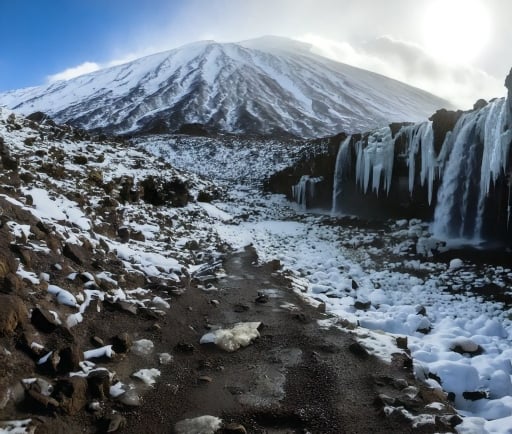The Cascade Volcanic Arc: A Geological Marvel


Introduction to the Cascade Volcanic Arc
The Cascade Volcanic Arc is a remarkable geological feature that extends from California to British Columbia. This chain of volcanoes is not only significant due to its breathtaking landscapes but also because of its pivotal role within the Pacific Ring of Fire. The Ring of Fire is infamous for being home to approximately 75 percent of the world's volcanic activity, making the Cascade Arc an essential area for geological studies and monitoring.
The Formation and Characteristics of the Cascade Volcanic Arc
The Cascade Volcanic Arc was formed through complex volcanic processes resulting from the subduction of the Juan de Fuca Plate beneath the North American Plate. As this oceanic plate dives into the mantle, it melts and generates magma. This molten rock then rises to the surface, creating the stunning volcanoes we see today, such as Mount St. Helens, Mount Rainier, and Mount Shasta. Each of these volcanoes is unique, characterized by different eruptive histories and geological formations.
One intriguing aspect of the Cascade Volcanic Arc is the variety of volcanic types present. It features stratovolcanoes, which are tall, conical mountains formed by the accumulation of layers of lava, ash, and tephra. These structures often lead to explosive eruptions, which can have devastating impacts on the surrounding environment. This was notably seen during the 1980 eruption of Mount St. Helens, which drastically reshaped the landscape.
The Ecological and Cultural Importance of the Cascade Range
The ecological significance of the Cascade Volcanic Arc cannot be overstated. The region's diverse ecosystems, ranging from lush forests to alpine meadows, support a myriad of flora and fauna. These ecosystems thrive due to the unique soil compositions and microclimates created by volcanic activity. Furthermore, the presence of numerous protected areas, such as Mount Rainier National Park and Olympic National Park, preserves the integrity of these ecosystems and provides valuable opportunities for research and conservation.
Culturally, the Cascade Volcanic Arc holds significant importance for the Indigenous peoples of the Pacific Northwest. Many tribes regard the mountains as sacred, incorporating them into their cultural stories and traditions. Understanding these perspectives enriches our appreciation of the land and its volcanic history.
In summary, the Cascade Volcanic Arc is not merely a series of mountains; it is a dynamic testament to the powerful geological forces that shape our planet. Its connection to the Pacific Ring of Fire highlights its significance in the study of volcanic activity. As we continue to monitor and study these magnificent formations, we simultaneously foster a greater understanding of our Earth’s processes and the cultural landscapes intertwined with them.
